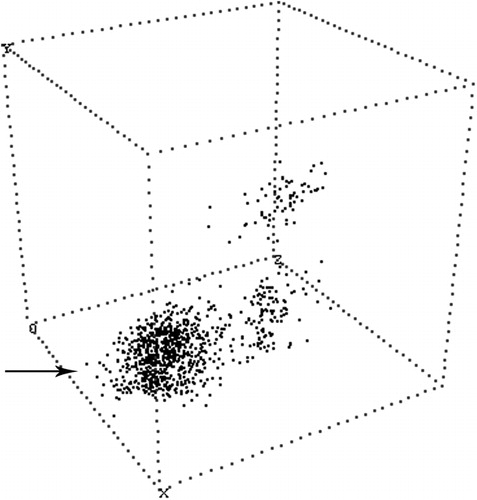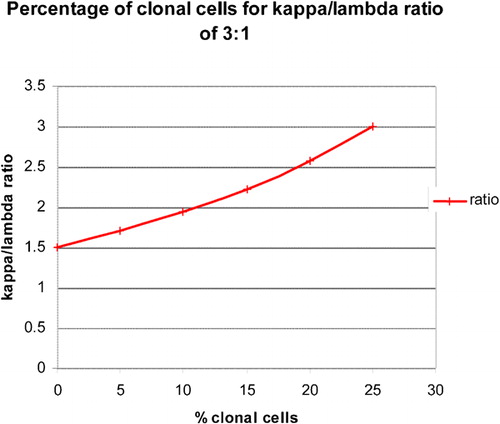Figures & data
Figure 1. Illustrates the notion of a diagnostic ’cluster‚ occupying a unique location in multidimensional space: the X axis is CD20, the Y axis is CD103, and the Z axis is surface immunoglobulin Lambda light chain. While the CD103 negative B (CD20) cells are polyclonal, the CD103 positive B cells are monoclonal. Thus, the coexpression of CD20, CD103 and lambda light chain, displayed as a cluster, are both necessary and sufficient to detect residual Hairy Cell Leukemia.

